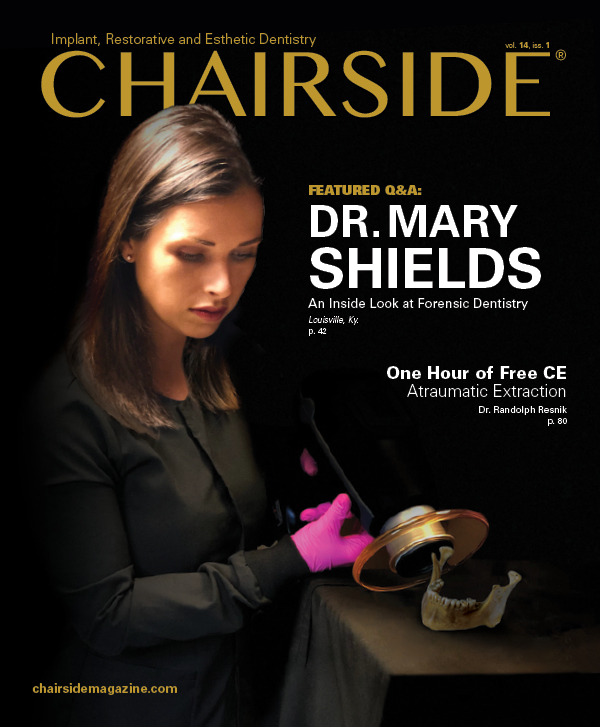Overcoming Objections Through Permission-Based Case Presentation
“Presenting cases to patients makes me feel pushy.”
“I don’t want my patients to feel ‘sold’ to.”
“My patients would never want me to recommend more than the minimal care needed.”
If you have ever had any of these thoughts, you’re not alone. Many doctors and their teams dislike the idea of prioritizing case presentation above patient care. However, assuming that you are ethical, diagnosing appropriately, and clearly communicating the patient’s treatment options, improving your case presentation helps your patients receive the care they need and enables you to utilize more of the dental skills you have refined.
But how do we ethically and compassionately communicate with our patients regarding their diagnosis, the available treatment options and — even more so — elective esthetic treatment, all of which can lead to case acceptance?
That’s where permission-based case presentation comes in. In the marketing world, the term “permission-based marketing” describes marketing outlets that consumers enter into willingly, such as following a business on Facebook. While “interruption-based marketing” such as advertisements “interrupt” my day, I am ultimately more engaged in permission-based messaging because I was asked and gave permission to receive that information.
Those who willingly enter a conversation about a product or service are more engaged and interested in what the other person has to say. Dialogue is more open, which in turn leads to a more satisfying result for everyone.
How does this relate to you and your case presentation skills? At Jameson, as we teach case presentation to dentists and team members across the U.S., we consistently find practices that struggle to achieve comfort and consistency in the area of effective communication. The ability to meet patients where they are, listen to their concerns and needs, and move the conversation ahead in a positive and natural manner are all communication skills that are essential to permission-based case presentation.

Permission-based case presentation requires many essential communication skills, such as listening to the patient’s concerns and needs.
The ability to meet patients where they are, listen to their concerns and needs, and move the conversation ahead in a positive and natural manner are all communication skills that are essential to permission-based case presentation.
EFFECTIVE PERMISSION-BASED CASE PRESENTATION
When you’re working with new patients or handling preventive care appointments and case presentations, you should do three things to help facilitate patient acceptance of your treatment plan:
- Educate the patient
- Motivate the patient
- Activate the patient
Are we as dental professionals asking the right questions to uncover the patient’s true wants and needs? Are we then taking what we learn from the patient and building on that? If we see that the patient needs two crowns, and they tell us they want to keep their teeth healthy for a lifetime, how would we share that diagnosis based on their long-term health goals?
Are we asking for permission to share any findings we have discovered? Are we asking for permission to present the best possible treatment? I believe that the path to case acceptance is filled with little “yeses” along the way.
For example:
Doctor: “Carrie, I am now going to do what we call a comprehensive oral evaluation. In doing so, I am looking at the overall condition of your teeth, gums and mouth, and identifying any possible concerns. May I have permission to share with you anything that I discover?”
Carrie: “Yes.”
Every step of the way, we are doing three things:
- Explaining and educating
- Asking questions and listening
- Asking permission to proceed
In doing these things, we develop a partnership with our patients that takes into account their total health and well-being. By actively engaging with patients, we gain their permission along the way, we build trust between each other, and we alleviate the anxiety that comes from misunderstandings, loss of control and confusion.

By involving your patients in the case process and gaining their permission along the way, you can build trust with your patients
ASKING THE RIGHT QUESTIONS
It’s important that you become more comfortable with asking your patient the right questions, especially early on, so that you can build a path that the two of you can take together that will lead to improved oral health for the patient. When it’s all said and done, make sure you have asked the right questions so you can find out the necessary patient information, such as:
- “What led you to this practice?”
- “What are your short- and long-term goals for dental care?”
- “What concerns do you have, if any?”
- “What questions do you have for me that need to be answered ASAP?”
- “What obstacles are preventing you from receiving care?”
- “Are you interested in learning about solutions to those obstacles?”
- “Do we have permission to share with you any findings from our evaluation?”
- “Do you understand our approach to dental care?”
- “Do we have your permission to present optimal treatment plans?”
Many of the answers to these questions are built within a well-communicated conversation. It takes practice, but with time you will find yourself having these clear, effective conversations with ease — and your patients will feel engaged in the process as well.
Asking these questions and effectively listening to the patient’s responses will take time, but it is imperative to building your relationship with the patient and creating ultimate success. Do you want the patient to say, “I’ll think about it,” and never schedule another appointment? Or do you want the patient to say yes, and then complete the treatment, pay the bill and even refer others to you? If you prefer option No. 2, then you should make sure you’re effectively communicating throughout the process so that the outcome of your conversation creates that kind of result.
By asking patients the right questions and gaining permission along the way, you will have a better idea of what your patients need and seek in their dental care, as well as what they desire in their relationship with you as their dentist. This is the path forward for a successful practice.

Asking the right questions and effectively listening to the patient’s response are imperative to building a successful relationship with the patient.
By asking patients the right questions and gaining permission along the way, you will have a better idea of what your patients need and seek in their dental care.
For more information on the practice-management consultation services offered by Jameson Management, Inc., contact Carrie at cwebber@jamesonmanagement.com or visit jamesonmanagement.com.



